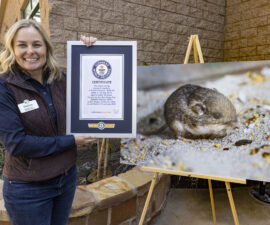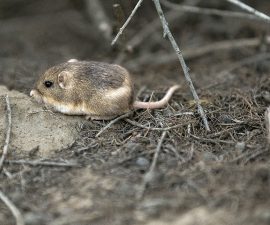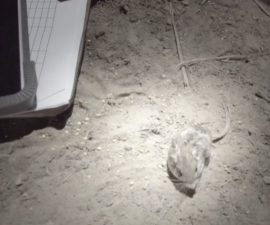Conservation of the endangered Pacific pocket mouse
BY Aryn Wilder
Photography by Ken Bohn
Weighing about the same as three pennies, the Pacific pocket mouse Perognathus longimembris pacificus is the smallest mouse species in North America. They get their name from pouches in their cheeks, used to carry food and nesting materials. In their native habitat, they disperse the seeds of native plants, and their excavation of underground burrows aerates the soil and encourages plant growth.
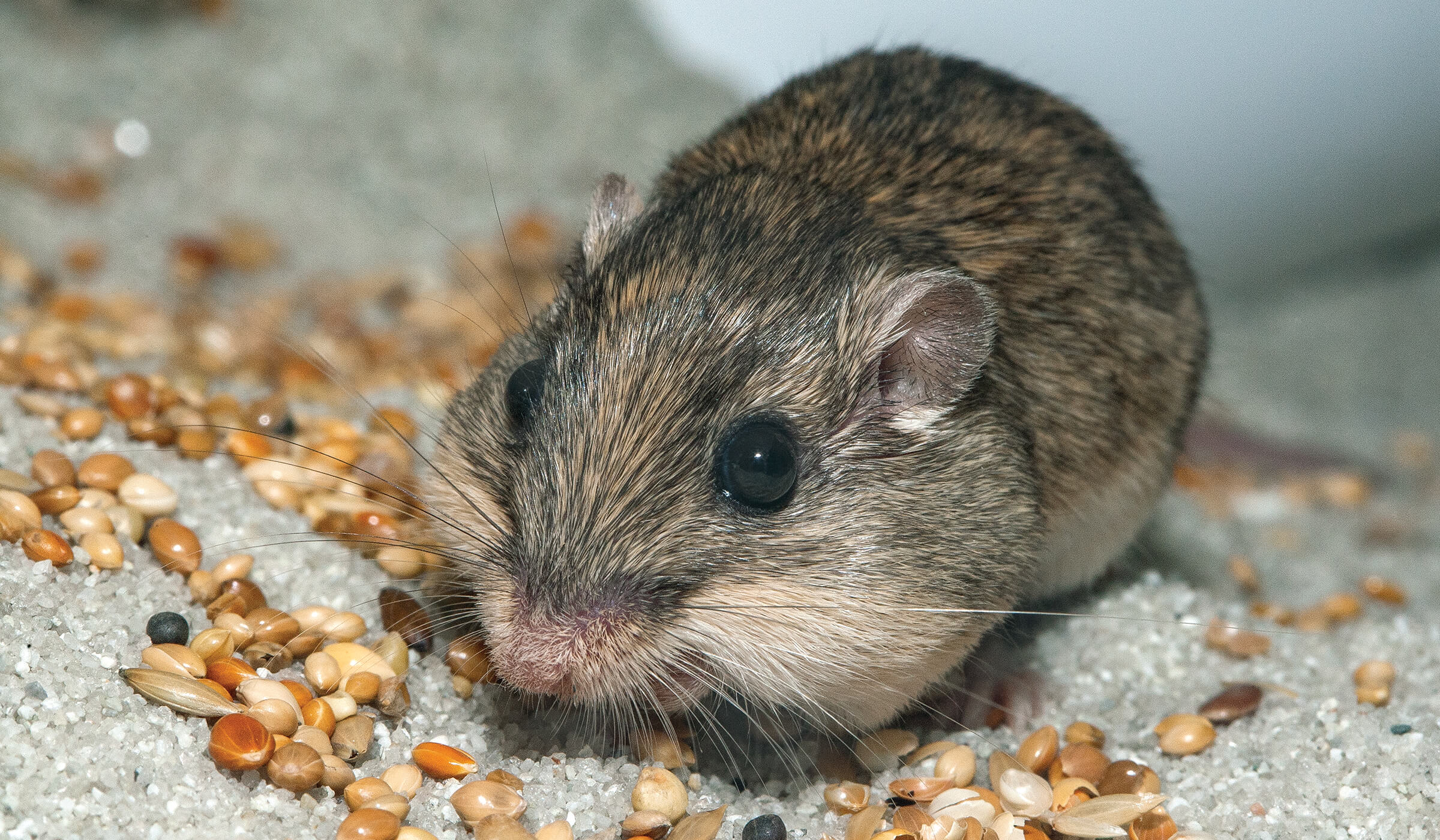
Small Species, Big Challenge
Once found in coastal habitats stretching from Los Angeles to the southern US border, these critically endangered animals now persist in just three small populations in Southern California. These dramatic and dangerous population declines prompted San Diego Zoo Wildlife Alliance to establish a conservation breeding program in 2012 to help save the species from extinction. The remaining populations are isolated from one another by long distances and urban barriers, which prevents beneficial outbreeding and makes inbreeding more likely. In breeding programs aimed at conserving animals from small or isolated populations, scientists must balance the competing needs of adding genetic diversity and avoiding the introduction of harmful genes. This makes for a delicate task of boosting diversity in the endangered Pacific pocket mouse.

LOCATION, LOCATION, LOCATION
A prime Pacific pocket mouse habitat includes the right plants for the seeds the mice eat, but also the right type of soil for burrowing.
Through our conservation research, we are using genetic tools to help us better manage the Pacific pocket mouse population, both in the breeding program and throughout their range. Genotyping hundreds of mice at about 20 different sites in each of their genomes sheds light on population differences and genetic diversity, and helped us to better understand how a mouse’s reproductive success was related to its ancestry. But these studies also raised a number of questions that could not be addressed with traditional genetic methods that use only a tiny fraction of the genome.
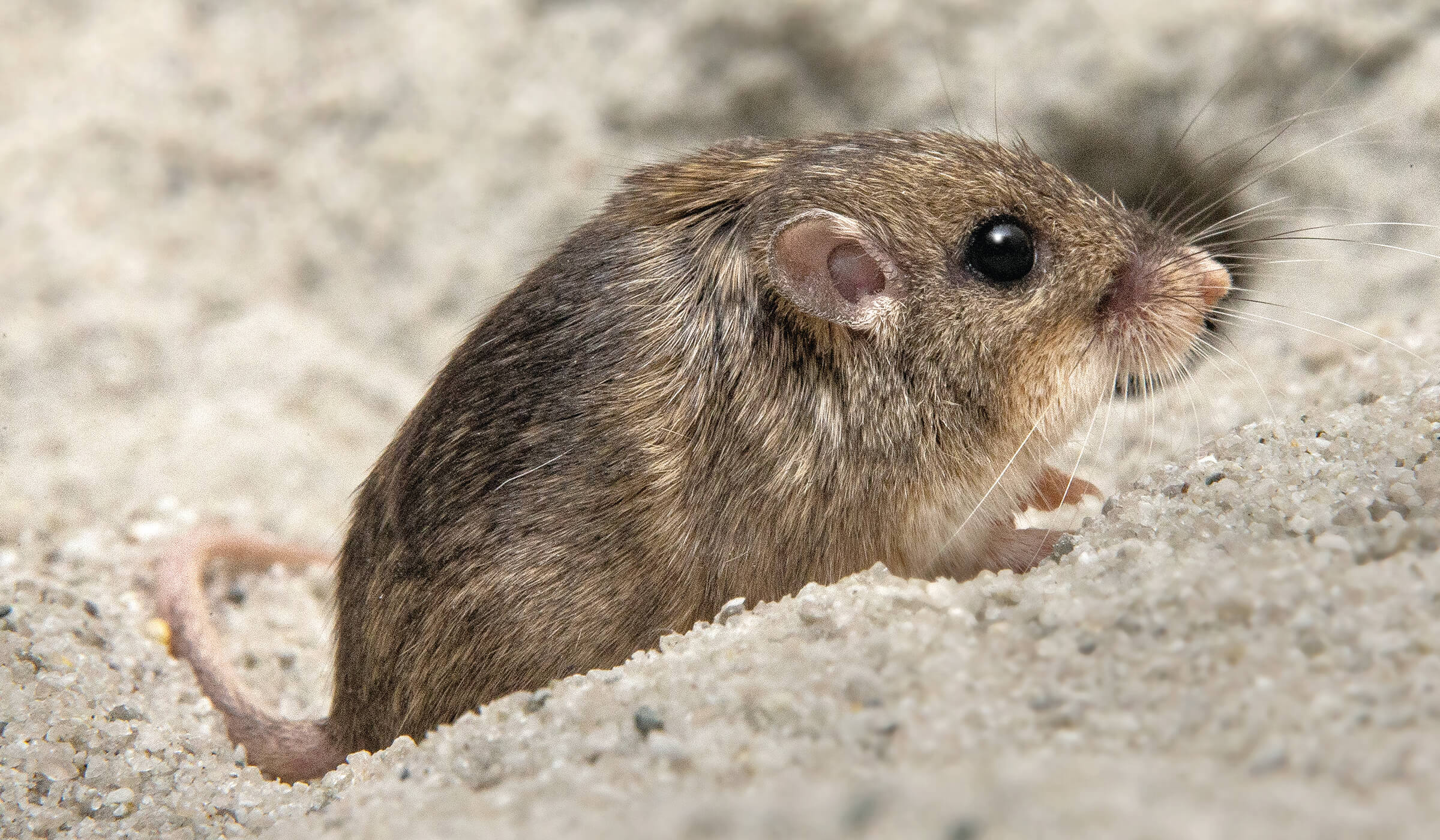
From Genetics to Genomics
What to do when a handful of genetic markers will not do? Sequence the whole genome! We now have entire genome sequences for nearly 400 Pacific pocket mice from the three wild populations and the conservation breeding program. With each genome close to 2.6 billion base pairs in length, the raw data alone requires more storage than the capacity of 20 iPhone 7s combined, a figure that grows several times over during the process of analyzing the data. Moreover, the computational power required just to align the data so that it can be boiled down to a set of informative genetic variants takes two weeks, with the task spread across 30 CPUs. (For reference, most laptops have 2 CPUs.)
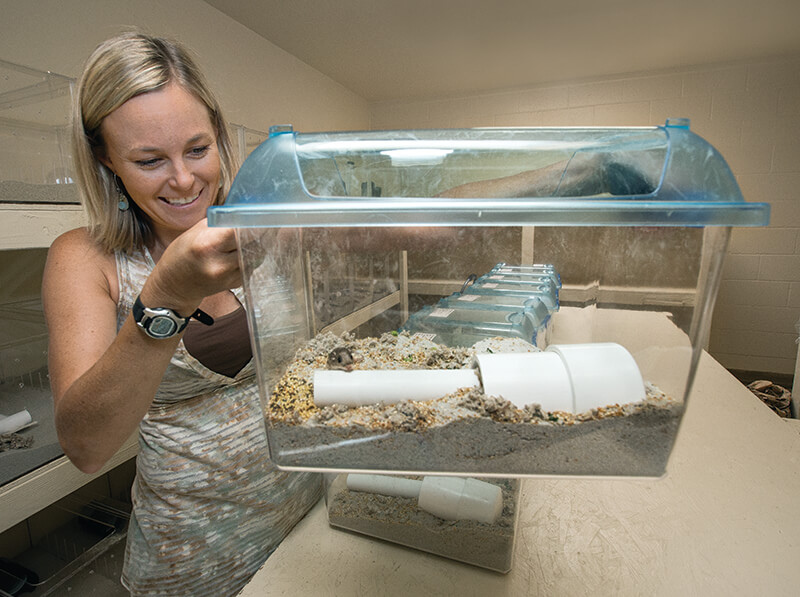
A PROPER MOUSE HOUSE
We were able to create “just right” habitats at our facility that allowed for protected breeding, which increased the population.
From these genomes, the first of their kind for a species in the family Heteromyidae, we have identified about 14 million genetic variants across the Pacific pocket mouse genome. We are hopeful that this far more complete and comprehensive dataset will allow us to address long-standing questions.
For example, a first analysis of this genomic dataset aims to understand the history of the Pacific pocket mouse. How large are the wild populations, how large have they been historically, and how recently did they decline? How long have the populations been isolated? Are there local adaptations that are unique to the different populations? Understanding their history will provide important information about the source of population declines, and whether enabling migration between the isolated populations is an appropriate management strategy.
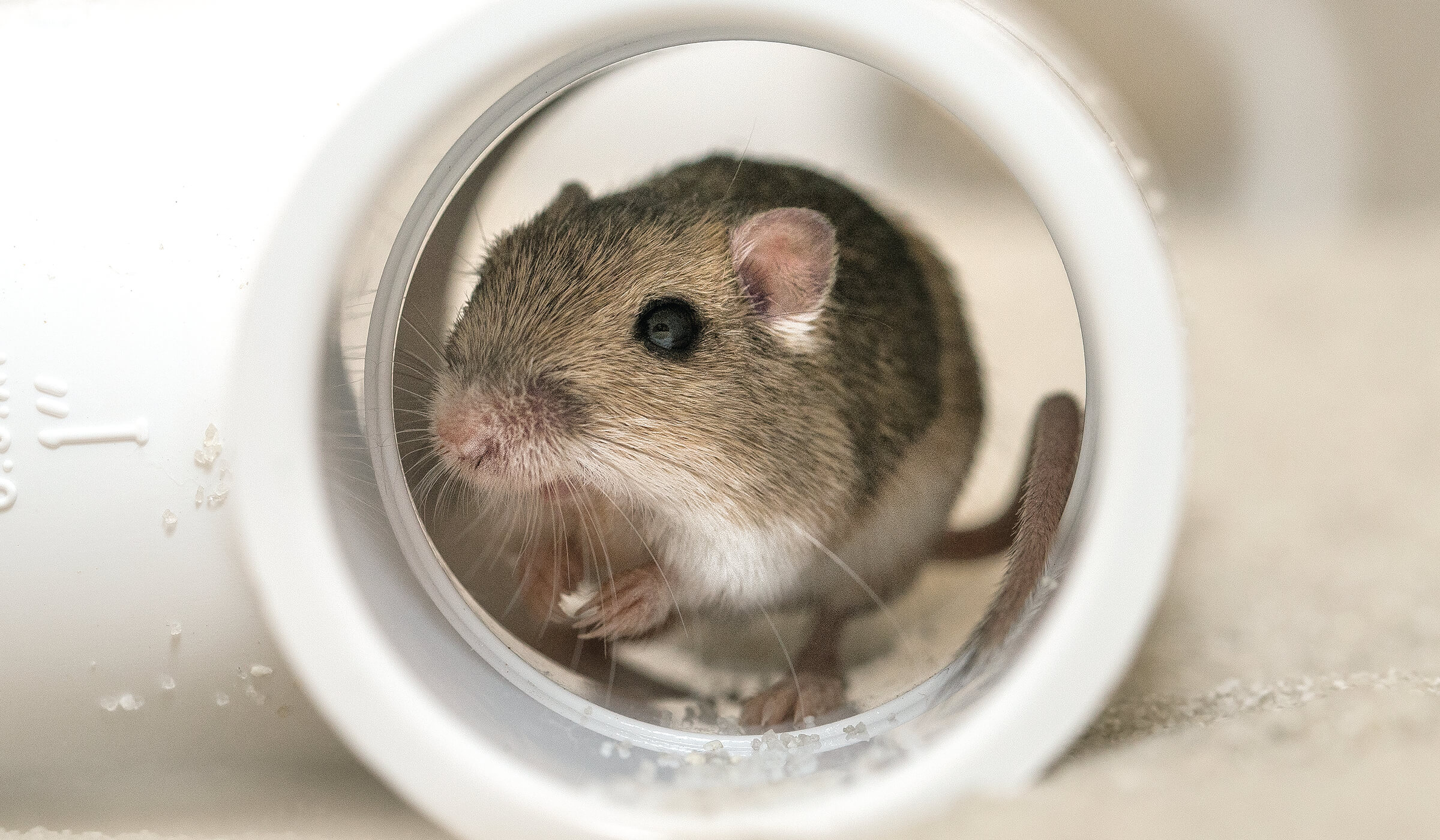
Weighing the Future
 The number of years the Pacific pocket mouse was considered extinct. (They were rediscovered in 1993.)
The number of years the Pacific pocket mouse was considered extinct. (They were rediscovered in 1993.)
Drawing on genetic data from six generations of Pacific pocket mice in the conservation breeding program, we tracked reproductive success relative to a mouse’s wild ancestral population. Using the number of offspring as a measure of fitness, we examined the reproductive success of more than 300 Pacific pocket mice.
Descendants of the smallest and least genetically diverse population had the lowest reproductive success. Interbreeding with the larger, more diverse populations increased the fitness of their offspring relative to this small population, but came at a cost to the larger population. Our findings indicate that genetic diversity should be introduced from the larger, genetically healthier populations of Pacific pocket mice into a smaller, less healthy population—and not the reverse. These results reinforce the idea that when there is a large difference of populations, gene flow should be unidirectional from the more-fit to less-fit population, in order to avoid the introduction of deleterious alleles into healthier groups.
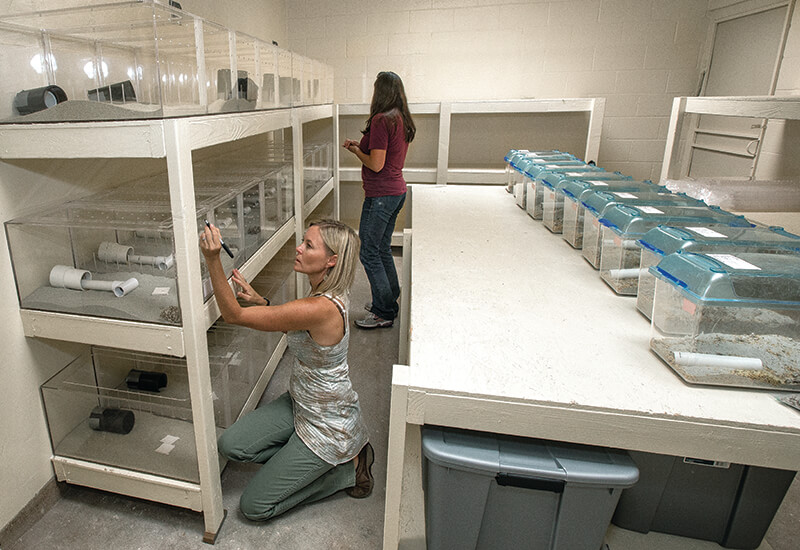
THE “CENTER” OF THE ACTION
The Pocket Mouse Conservation Breeding Center is located in a remote area of the San Diego Zoo Safari Park.
This study provides direct data to help us understand how populations will respond to assisted migration. Boosting genetic diversity by introducing genes from outside populations may help prevent inbreeding and increase fitness, to better enable wild populations to be self-sustaining—the ultimate goal in saving species.




